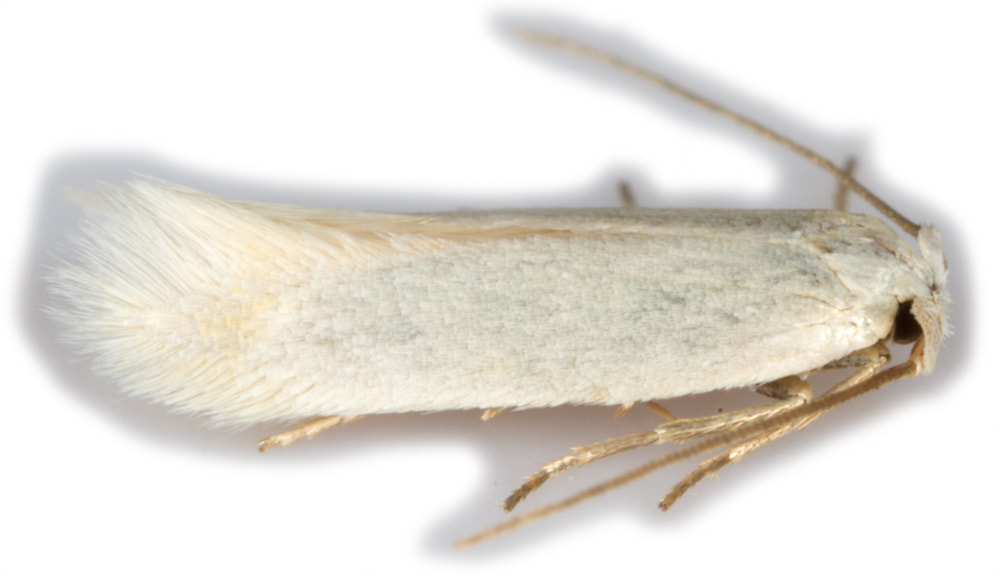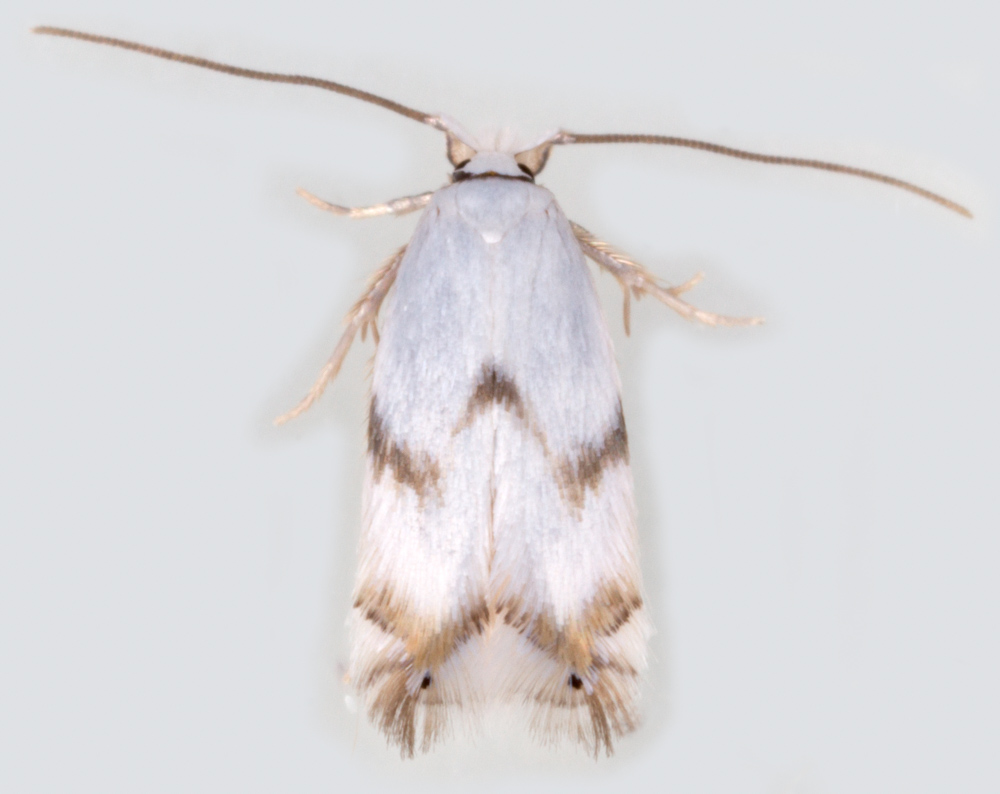Small (ws:7-12mm)
Head covered with broad flat scales, with a tuft of hair scales at vertex
Antenna simple, shorter than forewing. Scape with a large eyecap. Proboscis rudimentary. Maxillary palps folded. Labial palps shorter but straight
Forewing venation reduced to 5 unbranched veins (cf branched in Nepticulidae). Hindwing frenulum replaced by a series of stiff bristles
Both wings have long cilia.
Hindtibia appears to have 2 pairs of spurs and a series of stiff bristles - but this is not mentioned in MBGBI.
Head covered with broad flat scales, with a tuft of hair scales at vertex
Antenna simple, shorter than forewing. Scape with a large eyecap. Proboscis rudimentary. Maxillary palps folded. Labial palps shorter but straight
Forewing venation reduced to 5 unbranched veins (cf branched in Nepticulidae). Hindwing frenulum replaced by a series of stiff bristles
Both wings have long cilia.
Hindtibia appears to have 2 pairs of spurs and a series of stiff bristles - but this is not mentioned in MBGBI.
Opostega (2S)
|
001 Opostega salaciella (Sorrel Cap)
|
002 Opostega spatulella (Essex Cap)
Has not occurred in the UK since 1955, but it seems to be an irruptive species and it still occurs in widespread countries across Europe, so I guess it could turn up again. Incidentally, one of the the few places it has been recorded in Britain is Southend, Essex (where I live). Unlike other British representatives of this family it has ochreous rather than white forewing ground colour. |
Pseudopostega (2S)
|
003 Pseudopostega auritella (Fen Cap)
ws: 9-12mm; Jun-Jul; larval mine in Marsh Marigold (Caltha palustris); fens of Norfolk and Cambridgeshire (recently present at Sutton Fen). Forewing has a mid-dorsal fuscous mark on a white ground colour and no mid-costal oblique mark. |
004 Pseudopostega crepusculella (Mint Cap)
|
All images © Chris Lewis


